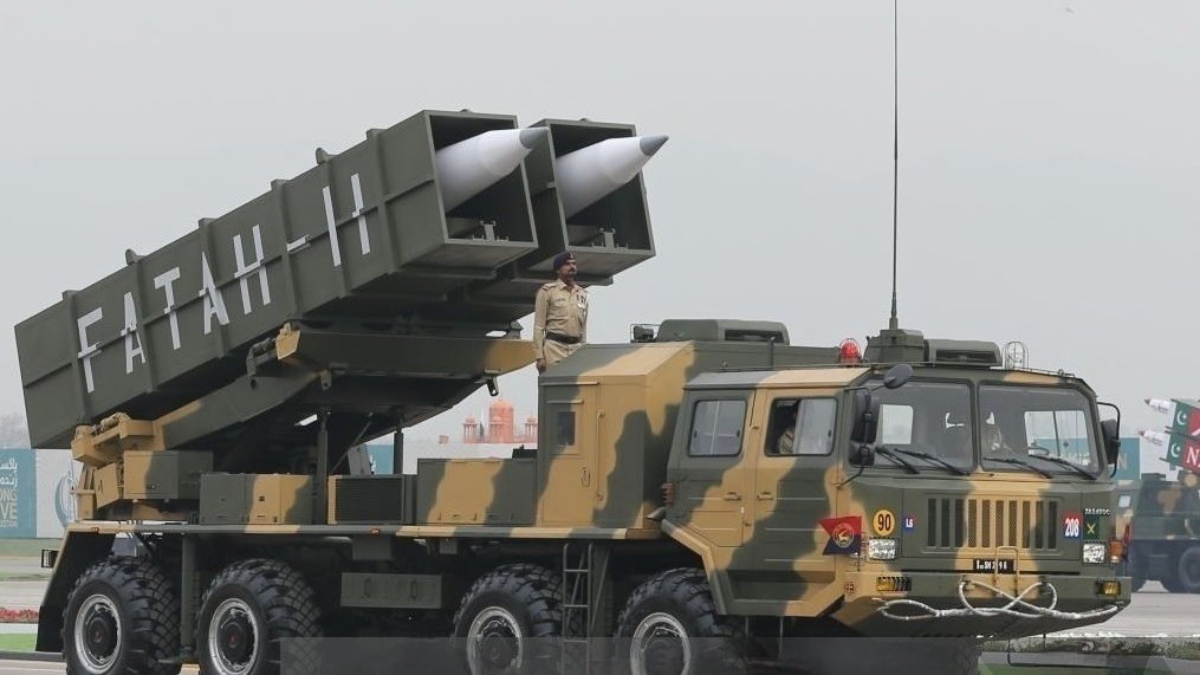SOURCE: AFI


Pakistan’s much-touted Fatah-II guided rocket system, often dubbed the “S-400 Slayer” by Pakistani defense analysts, has met a humbling fate at the hands of India’s air defense systems. In a recent escalation along the Line of Control (LoC), the Indian Air Force (IAF) successfully intercepted and neutralized multiple Fatah-II rockets using its Medium-Range Surface-to-Air Missile (MR-SAM) and the indigenous Akash Mk1 systems. This development has significantly undermined Pakistan’s claims of the Fatah-II’s ability to penetrate India’s formidable S-400 air defense network, revealing a stark gap between rhetoric and reality.
Since its first test in December 2023, followed by a training launch in May 2024, the Fatah-II has been a point of pride for Pakistan’s military establishment. Developed by Global Industrial & Defence Solutions (GIDS), the Fatah-II boasts a range of 400 km, advanced avionics, and a flat trajectory designed to evade radar detection. Pakistani analysts, including Umair Aslam of Global Defense Insight, have hailed the system as a game-changer, claiming it could neutralize high-value Indian assets like the S-400 through saturation attacks. These attacks, they argued, would combine Fatah-II rockets with cruise missiles and loitering munitions to overwhelm India’s defenses. The narrative of the Fatah-II as an “S-400 Slayer” gained traction, with Pakistani military officials asserting its ability to target critical infrastructure and air defense units deep within Indian territory.
However, the recent interception of the Fatah-II by India’s MR-SAM and Akash Mk1 systems has shattered these lofty claims. The MR-SAM, a joint development between India’s DRDO and Israel Aerospace Industries (IAI), detected and destroyed a Fatah-II rocket aimed at a strategic target, despite its flat trajectory and supposed stealth features. With a range of 70 km and advanced radar capabilities, the MR-SAM proved its effectiveness against guided rocket systems, neutralizing the threat mid-flight. Similarly, the Akash Mk1, with its 25 km range and Rajendra radar, intercepted multiple Fatah-II rockets, showcasing its ability to handle low-altitude, high-speed threats in contested airspace. Posts on X reflect a sentiment of vindication among Indian observers, noting that the Fatah-II, once labeled an “S-400 Slayer,” couldn’t even bypass India’s shorter-range defenses.
The S-400, which Pakistan claimed the Fatah-II could neutralize, remains a far more advanced system than the MR-SAM or Akash. With a detection range of 600 km and the ability to engage targets up to 400 km away using missiles like the 40N6E, the S-400 is designed to handle multiple threats simultaneously, including ballistic missiles. Its Very High Frequency (VHF) radars are particularly adept at detecting low-flying objects, countering the Fatah-II’s flat trajectory advantage. If the Fatah-II struggled against the MR-SAM and Akash Mk1, its chances against the S-400 appear even slimmer, casting serious doubt on Pakistan’s deterrence strategy.
This incident highlights the robustness of India’s multi-layered air defense architecture, which includes not only the S-400 but also systems like the Akash, MR-SAM, and the upcoming Project Kusha. The successful interceptions demonstrate India’s ability to counter Pakistan’s evolving missile arsenal, even systems designed to challenge sophisticated defenses. For Pakistan, the failure of the Fatah-II to penetrate India’s air defenses is a major setback, exposing the limitations of its indigenous technology and the overconfidence of its defense analysts. The Fatah-II’s inability to live up to its “S-400 Slayer” moniker suggests that Pakistan’s strategy of using guided rockets to achieve strategic objectives may be more aspirational than practical.
NOTE: AFI is a proud outsourced content creator partner of IDRW.ORG. All content created by AFI is the sole property of AFI and is protected by copyright. AFI takes copyright infringement seriously and will pursue all legal options available to protect its content.